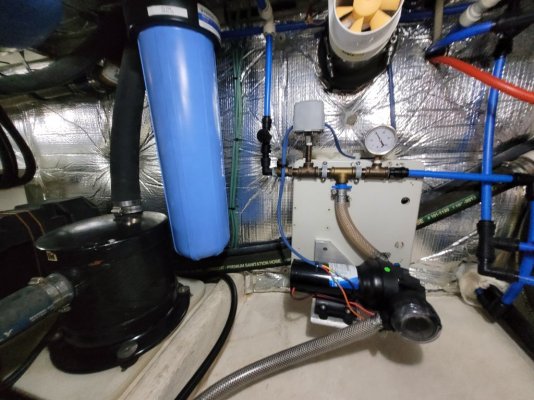I decided to filter all the water from my water tanks. This is the filter housing I used:
Fits standard 1.5-inch water lines

www.discountfilterstore.com
It takes a 20 x 4.5" filter cartridge. This is the cartridge I used:
Fits most 20 x 4.5-inch filter housings including the Viqua IHS12-D4 and IHS22-D4 water disinfection systems.

www.discountfilterstore.com
It's a carbon block style cartridge, but the cartridge is large enough to have a 10 GPM flow rate ( smaller cartridges wouldn't be enough to shower with). The carbon block filters the chlorine out of the water and any other objectionable tastes. I would replace mine annually but could probably have gone several years as the cartridge is so large and boat water consumption is low by necessity.
Ted



